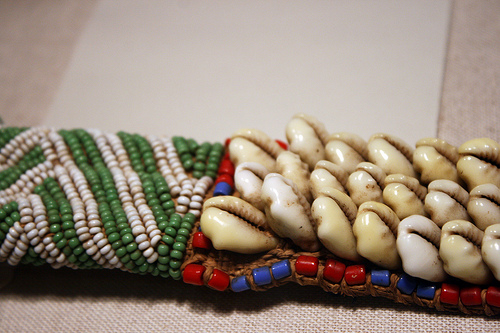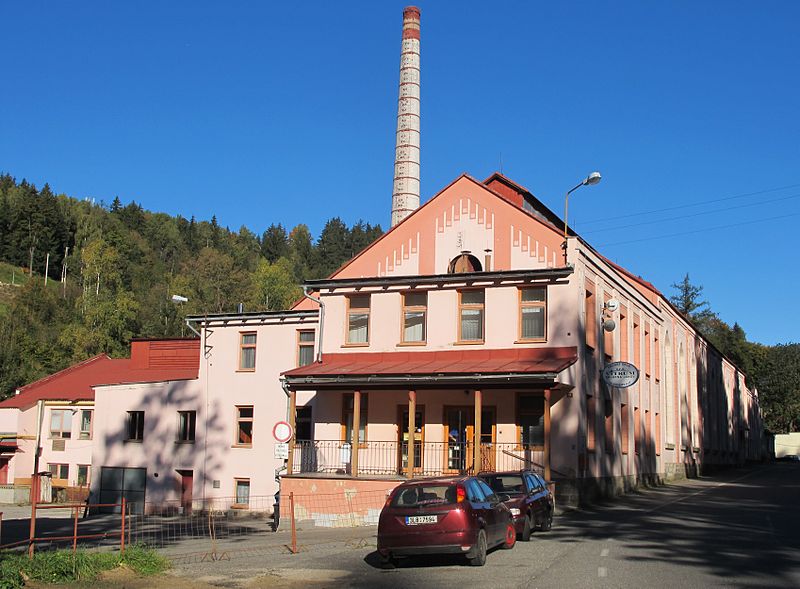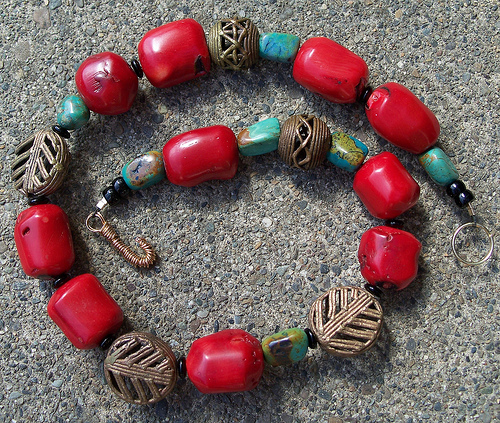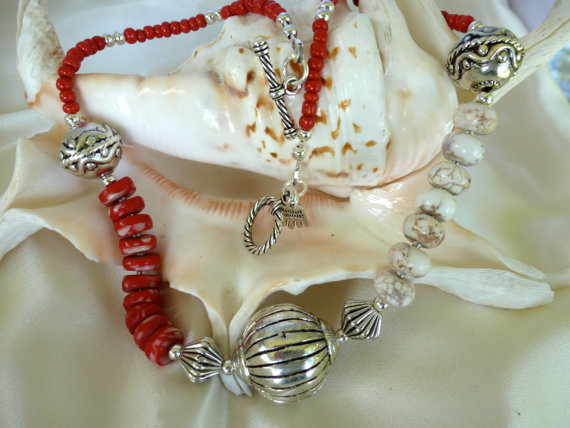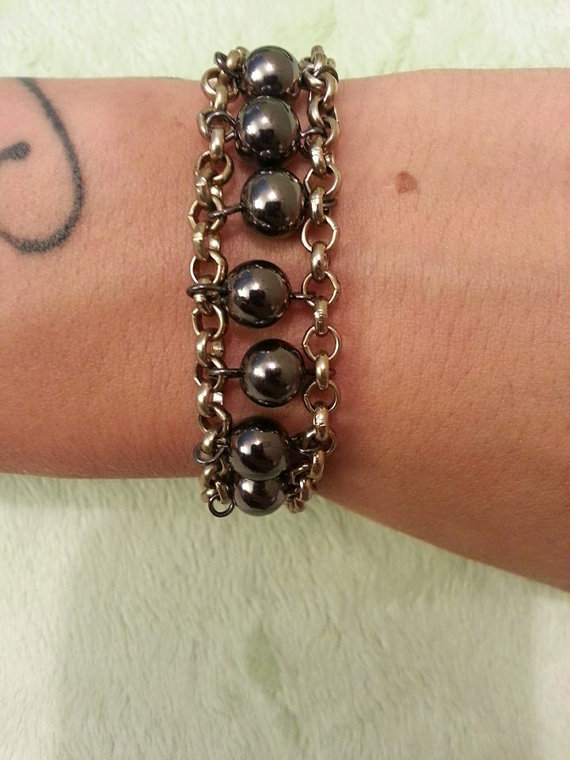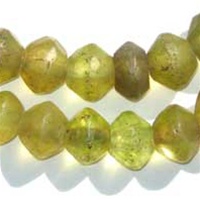The Fascinating History of Cowrie Shell Beads as Legal Tender in Africa
The humble cowrie shell has many connotations and uses in African culture – not least as a form of legal tender up until the early 20th century. Symbolic of both destiny and prosperity, the shell of Cypraeidae molluscs (large sea snails) was considered particularly valuable by tribes in West Africa, whom associate them with various ocean deities associated with wealth and strength. Such was the value of the cowry to Ghanaian tribespeople, they even named their currency (the “cedi”) after these marine molluscs!
Interestingly, cowrie shells are not native to Africa. They are predominantly found in the Indian and South Pacific Oceans, most notably around the Maldives and Fiji. According to historians, it's likely that strands of these small, polished 'sea eggs' were introduced to Africa by Chinese merchants sometime around the 9th century, making them one of the earliest types of trade beads to be used as a medium of exchange anywhere in Africa.
The value of the cowrie shell is well documented to have been far greater in West Africa than elsewhere on the continent, and many attribute this to the West Africans' love of beads for self-adornment. Merchant journals from the 19th century suggest that gains for cowrie shells sometimes exceeded 300%! The lucrative trade in cowrie shells during the 1800s led to the development of a recognised currency system of sorts, with around 20-30 strings equating to one dollar. Inland too, the measure of one's wealth was counted in cowrie shells; the then king of Bornu estimated to be worth more than 30,000,000!
Today, the cowrie shell continues to play a central role in the cultures and faiths of many African tribes. Some tribes, such as the Maasai, hang cowrie shells from the bride's wedding necklace to encourage fertility and prosperity, while in rural parts of Ghana, whole strands of shells are gifted to the groom as part of the bride's dowry. But value aside, cowrie shells are a beautiful natural element for tribal inspired jewelry, and in contrast to the 19th century, aren't all that expensive either!
Shop Cowrie Shell Beads - 80 Shells per Strand
Bead-Making in Czechoslovakia – A Brief History
Second to China, modern day Czechoslovakia is one of the world's largest producers of glass beads for the commercial market. But, it could have been a very different story had the Communists remained in power.
Glass bead production in Bohemia (now part of central Czechoslovakia) can be traced back to the times of Roman occupation around 400 A.D. From then until the 12th Century, it was largely a cottage industry; glass-makers manufacturing beads to order for Catholic rosaries and door hangings. The 1500s saw the rapid expansion of glass factories within cities such as Stanovsko, Reichenburg and Jablonec, most of which were eager to cash in on the growing demand for glass beads by Spanish, English and Italian merchants.
The Industrial Revolution of the 19th Century saw the invention of numerous machines that enabled bead-makers to produce pressed glass beads on a massive scale, and at far less expense. Such machines also allowed a greater variety of shapes and cuts to be achieved, earning Bohemia an enviable reputation for innovative designs – such as fluorescent Vaseline Beads, produced by mixing Uranium salts with glass.
Mass production of glass beads continued throughout the early 20th Century in North Bohemia, and by 1928, the newly formed Czechoslovakia had superseded Venice as the largest exporter of glass beads in the world. Sadly, this success was short-lived. A combination of events – the Great Depression and World War II – severely impacted the bead-making industry. The Sudeten German bead-makers of North Bohemia were forced to move to Neu Gablonz, within Germany's borders, meaning that many factories in Jablonec closed permanently.
The bead-making industry went into further decline from 1948 when the Marxist-Leninist Communist Party of Czechoslovakia came to power, forcing the closure of many more factories in Jablonec and Reichenburg. It was only in 1958, following the death of Stalin, that a group of artisans were able to muster enough backing to re-establish the industry. However, they were only able to do so by agreeing to the industry becoming nationalized by the Communist Party. They controlled all aspects of import and export to and from Czechoslovakia for the next forty years until they were ousted in 1989, after which, Czechoslovakia's former cottage industries again began to flourish once more.
Padre Beads – Relics of the Ch’ing Dynasty
Today, China has the monopoly on 21st century bead production. But it wasn't always so. Prior to 1912, the country had little in the way of a bead industry to speak of; its economy largely dominated by farming and agricultural industries. It wasn't until the 17th Century – the beginning of the Quing (or Ch'ing) Dynasty - that glass-makers began to realize the true economic potential of glass bead-making. Up until that point, only a handful of artisans were producing glass for anything other than commercial sale.
Competition among senior members of the royal court was rife in the 17th Century. Both men and women strived to outrank one another in terms of style and extravagant displays of wealth, just so they would be accepted by those in the upper echelons of society. Like jewels and gold, heavy embroidered fabrics were considered trademarks of wealth and aristocracy. Those that couldn't afford expensive diamonds commissioned glass-makers to produce small, wound glass beads known as “Peking beads” to embroider their gowns, starting a trend that would continue for the next 300 years.
As trade networks developed between Europe, America and Asia, the Chinese began to recognize the potential of glass beads for economic gain. They began trading glass beads with tribes across Asia in exchange for exotic fruits, spices, tea and animal pelts; eventually expanding their trade networks to include parts of North America. Realizing the value of glass beads to indigenous tribes, Spanish merchants began exporting beads from China for their own gain. Spanish padres too saw the potential of these small glass beads, and began using them to convert African tribes during Christian missions in Africa – hence the name “Padre Beads!”
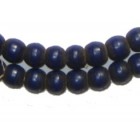
Old Navy Blue Padre Beads
The Cultural Significance of Coral Trade Beads in Benin
Coral beads have a unique symbolism to many tribes in Africa, yet few have adopted these beads into their culture quite as literally as the Bini people of Benin. They are customarily worn for both marriage and funeral rites, but also as an indication of social standing and power among clan chiefs.
There are two main types of coral bead identifiable in Benin culture: Ivie and Ekan. Ivie is considered the more precious of the two, and can usually be found in scarlet, rose and medium pink hues. Ekan is more stone-like in appearance with long threads of dark color interspersed with strips of steel gray. The former is considered far more valuable by Edo chiefs owing to its rarity, and also due to the fact it was allegedly stolen from the goddess of the sea by King Oba Ewuare in the 15th Century. It's rather more likely that both types of coral were introduced to Benin by European traders around this period, as the city was, back then, a crossroads for trade between Europe and Africa.
For centuries, the Oba (traditional rulers) of Benin have had strict rules governing the wearing of Ivie and Ekan in Bini culture. Certain shapes are considered rare and valuable, and can only be worn by clan chiefs and spiritual leaders. Historical records show that some chiefs who brought shame upon their clans, or fell out of favor with the Oba, were prohibited by Royal Edict from wearing coral beads completely. There is a well known story in Benin which tells how, in the 1940's, a ruler by the name of Oba Akenzua II seized the ceremonial beaded head-wear and coral beads of Chief Okorotun for his disloyalty to the royal family. Allegedly, the ceremonial garb was sent to his successor – an indication he was to become a chief, by order of the Oba. Had he refused, it would have been considered a treason of sorts. The chief would have become an outcast, and possibly even exiled for his refusal. What a price to pay for refusing a strand of beads!
3 Stylish Uses For Kakamba Prosser Beads
Prosser beads are so much more than colorful spacers. With their versatile donut shape, and myriad of two-tone color combinations, they make for beautiful focal beads whether teemed with silver chain, or wire-wrapped glass spheres. Here are a few examples which show how to incorporate them into contemporary, yet bohemian jewelry pieces.
Asymmetric Polychrome Necklace
This "Congo Kapers" necklace featured on Etsy is a classic example of how old Kakamba Prosser Beads can really give your jewelry that contemporary edge. The white of the Prosser Beads is beautifully accented by milky Howlite, a naturally occurring mineral which serves to further emphasize the marbled effect of these old trade beads. Focal silver spacers break up the a-symmetric design, creating a division between beads old and new.
Tassel Earrings
As long as tribal influences are in vogue, tassel earrings will never go out of fashion. To make them a little more visually unique and interesting, create a Prosser bead sandwich simply by threading two beads onto an eye pin, separated by a silver donut spacer in the middle. Then, create the tassels using Masaai seed beads in two colors that match your polychrome Prossers. To finish, simply attach to a fish hook ear-wire.
Dual Chain Bracelet
Chunky wrist adornments are bang on trend at the moment, and because of their size, Prosser beads make for great focal beads with this particular design. You'll need two matching strips of silver or bronze chain slightly shorter than the circumference of your wrist, coupled with approximately 11-13 Prosser beads in one color. Using eye pins, simply create a ladder of beads between the two chains, leaving a little room at each end for the bolt ring and clasp. This example from The Mad Lila at Etsy gives you an idea of the end result.
Hebron: The First Bead-making Capital of the World
Do have a favorite type of Trade Bead? While I love the diversity of Venetian Trade Beads, I have to admit that my real weaknessis for Trade Beads of little known or mysterious origin – like Hebron Beads. With their rustic worn aesthetics and tell-tale signs of age, you can't help but be a little curious about the history of these antiquated glass donuts.

Rare Antique Yellow Hebron Beads.
Hebron is a mystical holy city snuggled among the Judean Mountains in Palestine, famed for being the final resting place of Abraham, his kin and descendants. Hebron's significance as a Holy City has somewhat overshadowed its glass-blowing industry, the roots of which were established during Roman settlement of Palestine in 63 BCE. Although it's unclear when Hebron began producing beads, historical records show that glass-making factories abound from the 12th Century, producing everyday items such as oil lamps and drinking vessels for sale in the street markets.
The earliest known glass beads produced in Hebron were 'eye' beads; spotted, spherical orbs of glass in two or three colors. Aesthetically, they weren't dissimilar to the Skunk Beads produced by the Venetians in the 19th Century, and were considered particularly effective in warding off the 'evil eye'. As trade networks were established between Palestine, Egypt and Africa in the 18th Century,
Hebron's glass-makers began producing a greater variety of beads for use as trade currency. Two specific types – Hersh and Munjir - were mentioned in the 1799 journal of British explorer William George Browne, with further reference to their unusually course finish. It's entirely possible that Hersh and Munjir were early forms of what we now regard to be standard Hebron Trade Beads. Their course texture is of particular note, since glass-makers in Hebron utilized sand from the village of Bani Na'im, and sodium carbonate from the Dead Sea for production. As Palestinian merchants built trade links with Africa, the beads were exported in greater quantities – most notably to West Africa, and Kano, Nigeria. Here, locals adopted them for self-adornment – hence why they're also known as Kano Beads.
How Exotic Cornaline d’Aleppo (White Heart) Beads Got Their Name
Do you ever wonder how certain African trade beads come to get their names? The origins of most African trade beads can usually be determined by their name. For example, Dogon Beads are so called because of their popularity among the Dogon tribe of Bandiagara, Mali. But some, as I've recently come to find out, are a little more misleading.
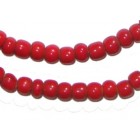
Red White Heart Beads
Cornaline d'Aleppo (commonly known as "White Heart Beads", or "Hudson Bay Beads" in America) were a popular type of wound and drawn trade bead produced between 1805 and the early 1900s in Venice, Italy. Unlike the more elaborate Millefiori Beads and Chevrons, Cornaline d'Aleppo are rather plainer in appearance, comprising just two layers of different colors. The core is usually white or off-yellow, while the outer layer (which wraps the core) is thicker, and ranges in color from burnt yellow to ruby red. A small quantity were also produced in varying shades of blue around the turn of the 20th Century, however, the most coveted were a seductive shade of dark ruby red. According to historical data, the brilliant red of Cornaline d'Aleppo Beads was the result of adding gold oxide to pink or violet glass.
So, how did they get their name? No-one can say with any great certainty why these Venetian Trade Beads came to have such an exotic name, although, it is thought that French-speaking tribespeople in Mali may have had something to do with it. The word "cornaline" is French for carnelian, a type of agate often used as currency among inter-trading tribes in Africa. "Aleppo" on the other hand, is the name of a small town in Syria. Some suggest the reference to Aleppo was inspired by the fact that it was once an important trading post between Africa and Asia. Nomadic African tribespeople would pass through the city to stock up on supplies, exchanging carnelian beads for essentials such as furs, tools and food. I prefer to believe the name derives from the magical striped stones of Aleppo, famous throughout Africa and Asia for their healing properties.
The Rise and Decline of Kakamba Prosser Beads
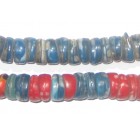
Red and Blue Kakamba Prosser Beads
The journey of a bead collector is one filled with ponderings and questions. Where do my Trade Beads come from? Who made them? Even if these tiny details don't mean much to you personally, they can have significant bearing upon your authority and commercial appeal as a jewelry artist.
Kakamba Prosser Beads are one of my most recent discoveries. I actually happened upon them whilst looking for some colorful spacers to use in my jewelry. Early Prosser Beads were named after English brothers Richard and Thomas Prosser, who devised the innovative molding technique for their production in 1840. The rights for this technique were later bought by Jean-Felix Bapterosses, a French button manufacturer who would later found one of the largest bead-producing factories in Europe. Sometime in the 1860s, Prosser Beads came to be known as “Kakamba Prosser Beads”; named after a small town in The Republic of the Congo where they were traded by merchants.
According to trade records, Africa was one of the chief markets for Prosser Beads. European traders would use them to build rapports with tribal chiefs, thus ensuring safe passage through unexplored or unknown regions. However, these merchants were shrewd types, and weren't averse to conning tribespeople in order to get what they wanted. Beads were often strung upon weak cord, which would break easily. Natives were also told it was bad luck to pick them up, thus creating a need for new beads in exchange for small favors.
Prosser Beads continued to be produced in Europe long after the death of Jean-Felix Bapterosses in 1885, however, largely fell out of favor as more elaborate beads were introduced to Africa in the early 1900s. Their sad decline in popularity eventually relegated them to the history books by the mid 20th Century – until locals in Kakamba began finding hoards of them in the ground while farming.
To think that the beads I hold today once traveled 3,000 miles from Europe to the Congo is amazing, but more fascinating still is the fact they may once have adorned the neck of a great tribal chief all those years ago. A slice of history being recycled once more for self adornment!
King Beads: The Mark of African Royalty
"King Beads", so named because of their popularity among tribal leaders during the trade era, are a type of marvered glass bead made in Murano, Italy, during the 19th Century. The earliest known examples of King Beads date back to the mid 1800s, examples of which can still be seen among the Moses Lewin Levin sample bead card collections held at the British Museum, London.
Characterised by their distinctive bicone shape and bold stripes, King Beads were typically larger than striped Chevrons, and were solely intended for use as a trade currency between merchants and African tribes. But, although Venetian King Beads run the gamut of color variations, the most common are green with yellow, red and black stripes. It is thought that such combinations were produced to enhance the appeal of the beads in Africa. Certain tribes, such as the Krobo of Ghana, are renowned for their use of colored beads as a medium of communication, and consider some combinations to be more desirable than others.
Legend has it that the size and specific colors of King Beads was inherent to their popularity among tribal chiefs in the 19th Century. The Anlo Ewe of Benin and Togo regarded these larger beads as being superior to other types of trade beads, and quickly adopted them as wearable symbols of status. Yellow King Beads became central to the Dipo initiation ceremonies in Krobo culture, since the color is associated with coming of age and future prosperity. Interestingly, a number of archeological excavations in Ghana have revealed that some royals were even buried with their King Beads – possibly to aid their prosperity in the afterlife!
Vaseline Trade Beads: A Radioactive Discovery?
We are proud to share with you the most comprehensive background on those beautiful beads known as Vaseline trade beads.
The 'radioactive era' as some refer to it was a period between the early
1900's, up to 1930 when a number of distinctive discoveries and advancements influenced an obsession with all things 'radioactive'. It was German chemist Martin Heinrich Klaproth who first discovered Uranium in 1789, however later revelations from French physicist Antoine Becquerel in 1896 proved that Klaproth had not isolated the metallic element - which we now know influences color under ultraviolet light.
Marie and Pierre Curie's work superseded these scientific announcements with the pioneering discovery of Radium in 1898. Interestingly, Marie Curie's work which extended to developing x-ray technology and radiography, won her two Nobel Prize Awards. Her work assisted in helping the treatment of soldiers during World War I, which is probably why she was also the first prize winner to be award two consecutive prizes, for two different types of work - chemistry and physics.
The trend for radioactive chemicals being used for decorative and everyday objects began around 1905. Everything from blown glass vases, to clock-faces, earthenware, pottery and Vaseline Beads were being made with the fluorescing properties of Uranium. Uranium influences an intense yellow-green, or violent green depending upon the kind of light it is subjected to, and appears to glow immensely in ultraviolet light.
Prior to the official discovery of Uranium as an isolated element, the compound was already being used (it is thought) within the production of glass trade beads. Several collections of faceted Vaseline Beads have been discovered, and are thought to date back to the 1830's - all feature the yellow-green characteristics attributed to the Vaseline Beads of the early 1900's. Vaseline Beads are often regarded as a product of Africa, however were first produced within Bohemia - now Czechoslovakia.
The fascination with radioactivity between 1905 and 1915 prompted a period of mass production for Vaseline Trade Beads, and not just within Bohemia. Several other countries, including England and Italy were also caught up with the fascinating properties Uranium salts influenced. Interestingly, it was only a concentration of 1-2% Uranium salts to a glass mold that would offset the chemical reaction that produces the green-yellow aesthetic.
Authentic Vaseline Beads produced around the late 1800's/ early 1900's are distinct due to their shape. Rondelles and discs were by far the most common shapes, however it is not unusual to uncover some with cut facets. Later replicas of Vaseline Beads were produced without Uranium (since later science also uncovered the possible harmful effects of radiation), and can be found in multiple hues. The Uranium was replaced with oxides or dyes during the molding process, and manual manipulation used to replicate the fluorescing qualities of Uranium.
